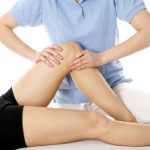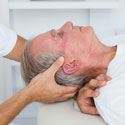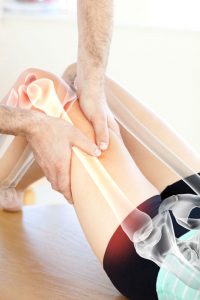SO WHAT IS OSTEOPATHY?

Osteopathy is a holistic system of diagnosis and treatment that looks at the whole body, focusing on how the skeleton, muscles, ligaments, and connective tissues work together. A key principle of osteopathy is that your well-being depends on your body’s structure functioning smoothly—when your structure works well, your body can function at its best.
Even minor injuries, such as a sprained ankle, can cause the body to compensate in ways that lead to tension or discomfort elsewhere. Stiffness or limited mobility in areas like the pelvis, spine, rib cage, shoulders, or neck can make it harder for your body to adapt, potentially resulting in aches or pain. Osteopathy aims to restore balance and movement to your body, helping it heal naturally—without the need for drugs or surgery.
Osteopaths are also trained to screen for other medical conditions, and will advise you to see your GP, midwife, or another healthcare professional if needed, ensuring your care is safe and well-rounded.
Treatment uses a variety of hands-on techniques, including gentle manipulation, stretching, massage, and guided movement. These approaches can relieve muscle tension, improve circulation, increase joint mobility, and support the body’s natural healing processes. In addition, your osteopath may provide advice on self-care, exercises, and lifestyle strategies tailored to your individual needs, helping you maintain long-term health and well-being.
WHO CAN BENEFIT FROM OSTEOPATHY?

Osteopathy benefits people of all ages and lifestyles: children, adults, older adults, manual workers, office professionals, sportspeople, and pregnant women. Patients often seek treatment for:
-
Back pain and postural problems
-
Repetitive strain injuries
-
Pregnancy-related changes in posture
-
Arthritis-related discomfort
-
Minor sports injuries
Osteopaths adapt their approach to each individual, using manual therapy techniques such as joint articulation, soft tissue manipulation, and tailored stretching to address your specific needs.
STRUCTURAL OSTEOPATHY
Structural osteopathy is the art and science of manipulative medicine, focusing on how your muscles, bones, and joints interrelate. Techniques may include:
-
Gentle and deeper soft-tissue massage
-
Joint manipulation and articulation
-
Various stretching techniques
By combining these approaches in a personalised way, osteopaths can help with a wide range of conditions, including:
- Arthritic pain
- Circulatory problems
- Cramps
- Digestion problems
- Fibromyalgia
- Frozen shoulder/ shoulder and elbow pain/ tennis elbow (lateral epicondylitis) arising from associated musculoskeletal conditions of the back and neck
- Headache arising from the neck (cervicogenic)
- Joint pains
- Joint pains including hip and knee pain from osteoarthritis as an adjunct to core OA treatments and exercise
- General, acute & chronic low back pain
- Generalised aches and pain including those related to pregnancy
- Migraine prevention
- Minor sports injuries and tensions
- Muscle spasms
- Neuralgia
- Inability to relax
- Rheumatic pain
- Sciatica
- Uncomplicated mechanical neck pain
OSTEOPATHY – PROTECTION OF TITLE TO PROTECT YOU

The title “osteopath” is legally protected. Only practitioners registered with the General Osteopathic Council (GOsC) can legally use this title. The GOsC exists to protect the public by setting high standards of competency, conduct, and safety for osteopaths and their training colleges. Individuals who practise osteopathy without being on the GOsC register can be prosecuted.
